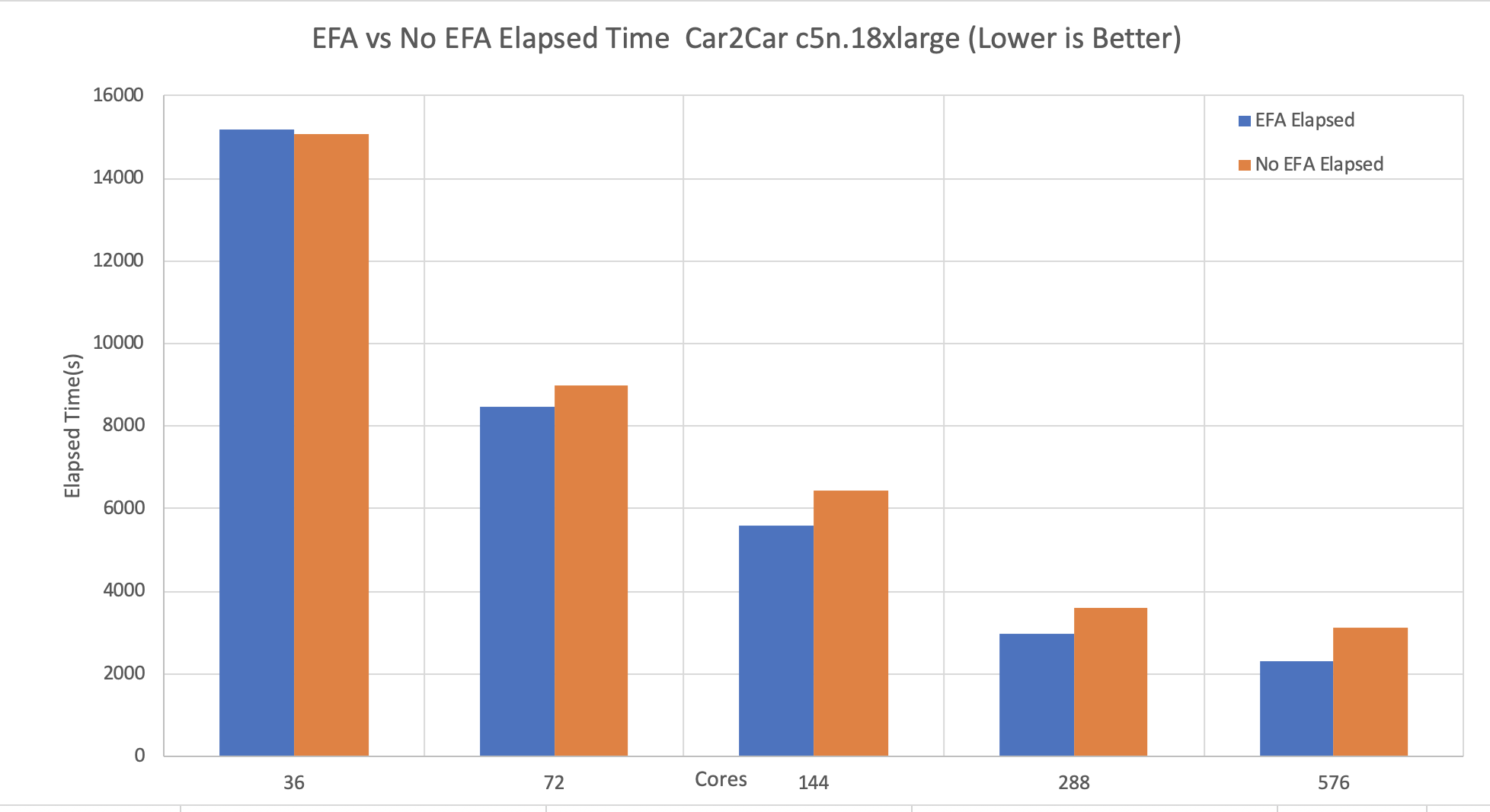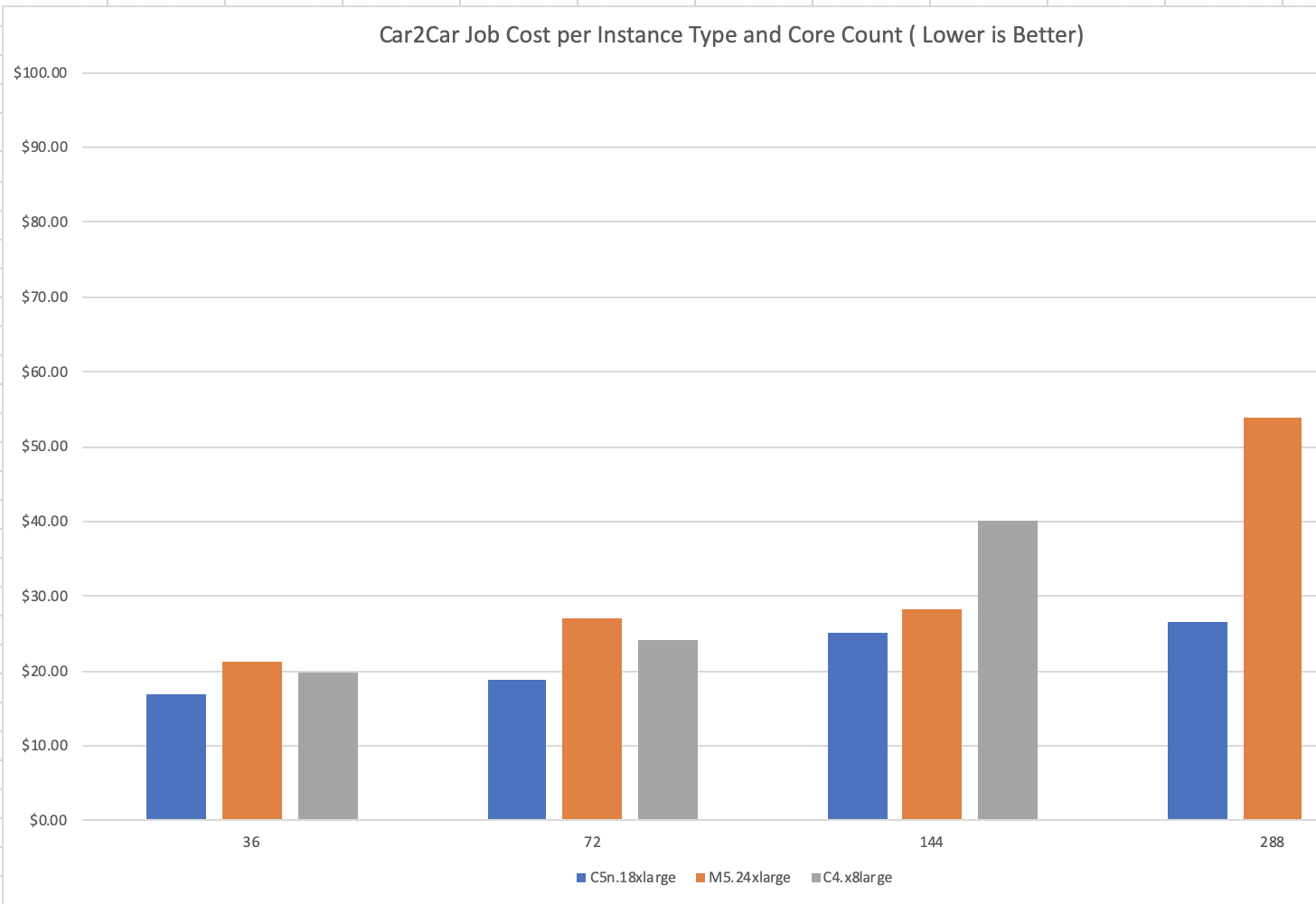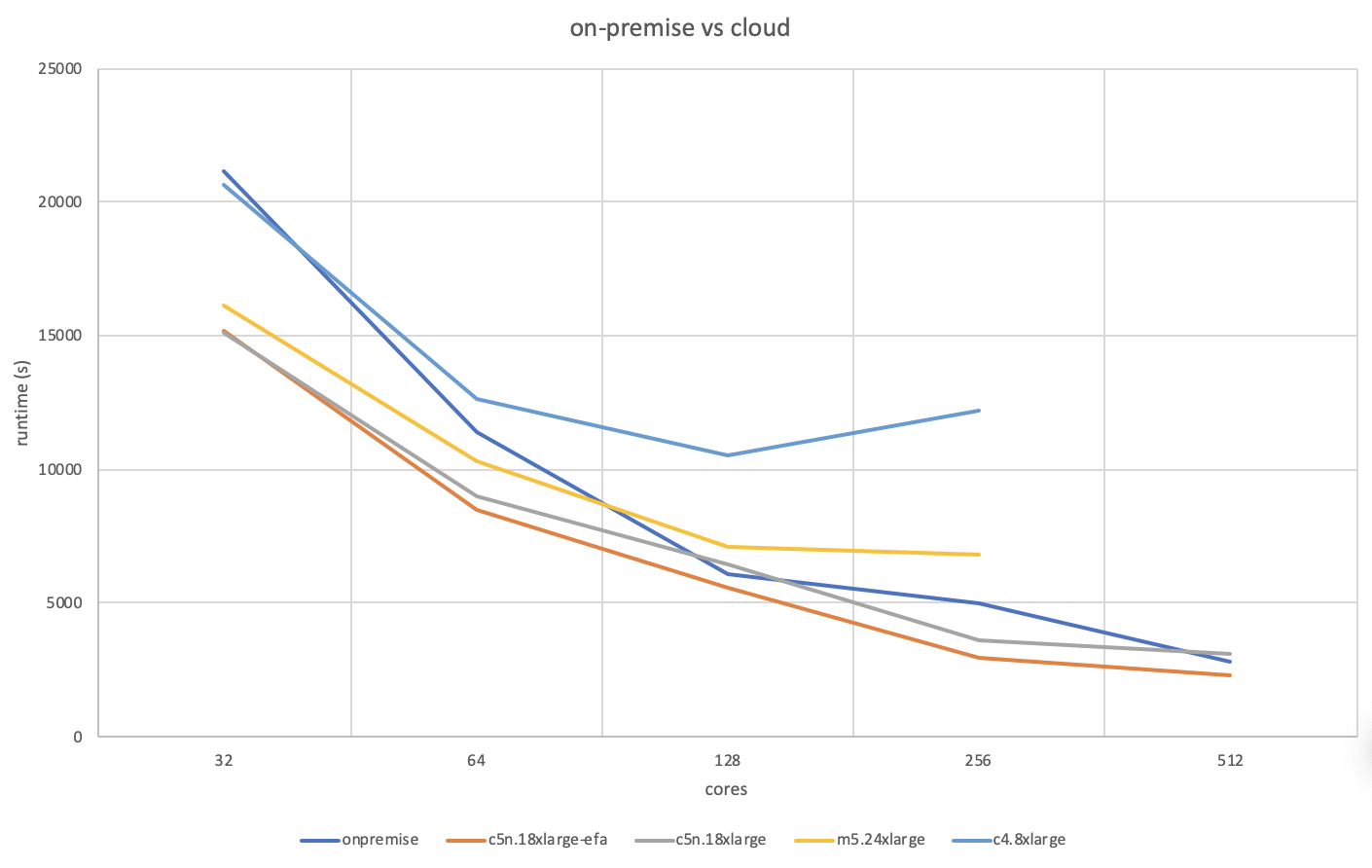Recently AWS announced their Elastic Fabric Adapter (EFA) which is a network device to accelerate distributed High Performance Computing (HPC) applications such as LS-DYNA.
An EFA device can be added to supported AWS instance types at no extra charge, and enables applications such as LS-DYNA to scale similar to on-premise clusters, and lower overall job costs by reducing communication overhead.
TotalCAE ran the Car2Car LS-DYNA benchmark with EFA to highlight the performance gains and real application-level benefits of EFA as you scale out to higher core counts, as shown in the graph below.

This reduction in runtime results in getting the same job on the same C5n compute instance back faster, and at lower cost on the same C5n instance type. C5n instances with EFA offer the best LS-DYNA performance.

c5n with EFA also scaled similarly to on-premise InfiniBand connected clusters for Car2Car, and you can see the benefit of having EFA compared to other instance types without EFA. Without EFA, the communication overhead causes speedup to stall at higher core counts, versus the nice reductions of C5n with EFA.
Note the on demand cost for C5 instances are lower than C5n, and so if you don’t need the additional clock speed, memory, and other benefits of C5n that is another good AWS instance choice for LS-DYNA.

TotalCAE Public Cloud users on AWS do not have to do anything different to use this new EFA technology from AWS, just submit as you normally would in just a few clicks as shown in our TotalCAE Portal for LS-DYNA
